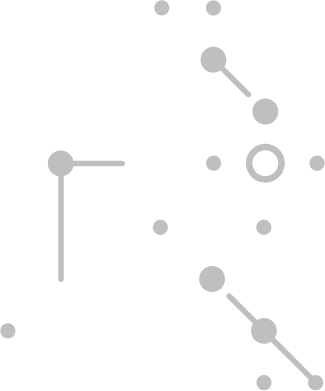



AI in CI/CD Pipelines: How to boost software delivery with the power of algorithms
2024-05-29 11:33:19The adoption of Generative AI continues at a rapid rate. 38 percent of businesses have already started using GenAI, while 42% of them are actively investigating the technology, according to IBM's Global AI Adoption Index.
This trend suggests that we are embracing Gen AI much faster than smartphones!
Unsurprisingly, since Gen AI shot to fame, the world of DevOps has also seen concerted attempts to take advantage of algorithms. In this post, I discussed some of the most common trends.
The processes of continuous integration and development (CI/CD) are at the heart of DevOps. By improving the building, testing, and deployment of apps to production, CI/CD pipelines streamline software delivery and make it more reliable, repeatable, and auditable.
And if a CI/CD pipeline sounds like a perfect candidate for AI-driven optimisation, that's because it is!
That's why I focus on AI in CI/CD today and the opportunities this technology brings to DevOps. Read on to learn more.
CI/CD is a must in today’s business landscape
Digital business is ruthless today. Users expect to get their needs served fast and without friction, so one glitch can cost a customer. This situation calls for impeccable software delivery and deployment processes.
CI/CD helps organisations avoid code failures while maintaining a continuous cycle of development and updates. As apps grow larger, CI/CD pipelines can decrease complexity, increase efficiency, and streamline workflows.
As CI/CD automates the manual intervention necessary to get new code from a commit into production, downtime is minimised, and code releases happen faster. As a result, you can incorporate user feedback faster to satisfy your customers’ needs quicker and positively impact your bottom line.
Why Gen AI and automation are a great fit for CI/CD
The repetitive character and critical role of the CI/CD pipeline in software delivery naturally position it as an ideal candidate for AI and automation. But there are a few more reasons for this coupling.
Firstly, using your historical and current data, Gen AI can predict potential failures, offer deep insights into your performance, and help you make more informed decisions.
Thanks to AI-based solutions, you can pick the optimal combination of testing, integration, and deployment strategies to ensure your pipeline dynamically adapts to your evolving needs.
Secondly, AI-based optimisation tools can spot and act on bottlenecks in your CI/CD pipelines. Consider them another pair of eyes that eliminates any issues before they impact your software delivery and drives down the time and resources necessary for troubleshooting.
Fourthly, AI can enhance the consistency of your CI/CD pipeline by automatically applying rules and standards quickly. There will be no more human error, delays, or discrepancies that could cost you business.
Finally, AI monitoring tools provide real-time insight into systems’ performance, ensuring they remain optimally functional and efficient. The ongoing tracking and analysis make spotting and solving issues quicker and easier.
Let’s discuss the CI/CD process stages where Gen AI brings the most value and mention relevant tools.
The four key areas of use of AI in CI/CD
1. Security tests
An area where Gen AI tools have been in use for some time now is security testing of the code.
There are many test types, from baselining known vulnerabilities to statically analysing the code for known bugs, such as database queries vulnerable to SQL injection attacks.
However, these tests mostly use known patterns and usually can’t find bugs in the application logic that a potential attacker could exploit.
This is where Artificial Intelligence can analyse the code and find its weaknesses. One of the pioneers in this area is Snyk’s tool, DeepCode AI. You can integrate it into your application building and testing processes.
2. Testing code quality
Code quality testing is another area where AI can bring great value to CI/CD pipelines.
Traditionally, testing code quality involves generating different metric types and examining parameters like code coverage by tests, the size of classes and functions, or cyclomatic complexity. These factors help assess how complicated your code is and how many test cases it requires to cover all the possible paths an app can take.
Unfortunately, even the best static code analysis tools don’t tell you if your code’s structure is optimal, logical, and understandable.
AI can be of great assistance in this matter. There’s already an entire tool category of AI coding assistants. Helping to create good code fast, they often come as plug-ins for popular IDE development environments like GitLab Duo and Github Copilot.
It’s a matter of time before these tools can expand traditional code quality analysis processes provided by software like Sonar with in-depth analysis powered by intelligent analysis algorithms.
3. Deploying code to production
AI can also revolutionise the process of deploying code to production.
For example, Harness offers an exciting solution involving post-deployment analysis. Using Machine Learning, the tool analyses logs from systems like Sumo Logic and stats from New Relic to see how the app’s performance changes after deploying a new build.
Anomaly detection algorithms can instantly determine if the number of bugs increases significantly and if the app’s performance degrades noticeably.
4. Code build
AI can also be useful in the evaluation of code-building processes.
You can use it to analyse the history of builds and deployments to generate a report and spot places that need attention or improvement. If anomalies appear in the CI/CD process, AI algorithms can help detect them and notify you before an incident snowballs into an emergency.
Another promising solution comes from Grafana Labs, the company behind the popular analysis and interactive data visualisation software called Grafana.
Based on LLM models, the tool can automatically generate incident reports and use monitoring data to prepare a post-event summary. Such tools can provide invaluable input for post-mortem analysis.
AI in CI/CD: potential challenges
While AI and automation undoubtedly benefit your team’s CI/CD processes, their implementation isn’t free from potential impediments. Here are some of the most common challenges teams encounter:
Adopting AI in CI/CD requires deep knowledge of this technology’s strengths, weaknesses, and best practices. Your team needs to be trained on the proper use of AI-based tools for seamless integration and deployment.
It is also advisable to seek professional CI/CD consultation before upgrading your existing processes with AI-driven solutions.
Using AI tools requires financial investment. Businesses should evaluate the ROI before implementing AI to see if the benefits outweigh setup and maintenance costs.
Integrating AI into existing CI/CD pipelines may be difficult, particularly when ensuring the tools operate seamlessly and don’t interfere with ongoing processes.
The privacy and security of the data used for training AI models are also important concerns. AI tools rely on analysing large data volumes, which may include sensitive information.
That’s why businesses must rule out the possibility of breaching their data privacy and security compliance regulations by implementing AI-powered CI/CD solutions.
If in doubt, don’t hesitate to seek a professional DevOps consultation. It’s always better to be safe than sorry or splash the cash on a solution that’s not compliant with your industry’s requirements and regulations.
The road ahead of AI in CI/CD optimisation
It’s still early days when it comes to deploying AI models in production, but it will undoubtedly significantly impact software development.
The range of tools deploying Gen AI in CI/CD is growing continuously, and the pace at which teams create and release software is already increasing. It’s a matter of time before the manual tasks slowing down the rate of building apps get eliminated.
The future of AI in CI/CD pipeline optimisation promises even more efficiency and reliability, thanks to the analysis of data from the development lifecycle. Predictive analytics will become even more precise in anticipating issues before they occur and suggesting proactive solutions.
AI has the power to allow CI/CD pipelines to adapt dynamically to changing requirements across different environments, boosting productivity and software quality.
Your turn
DevOps teams must evaluate how Gen AI can impact not only their tasks but also their entire software development lifecycle.
Ultimately, each organisation needs to decide how to best achieve its goals with AI use cases. The longer it takes your team to adjust, the harder it will be to overcome the challenges of deploying AI-powered automation in CI/CD pipelines.
Change is inevitable, so don’t postpone it at your business. Get in touch, and let’s find out how AI-driven solutions can enhance and make the CI/CD pipeline future-proof.

